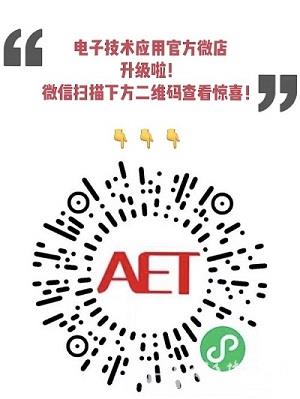文獻標識碼: A
DOI:10.16157/j.issn.0258-7998.222578
中文引用格式: 王喜升,侯鈺慧,郭波超,等. 無線電能傳輸系統(tǒng)基于Buck-Boost拓撲的最大功率傳輸研究[J].電子技術(shù)應(yīng)用,2022,48(10):129-134.
英文引用格式: Wang Xisheng,Hou Yuhui,Guo Bochao,et al. Research on maximum power transfer of wireless power transfer system based on buck-boost topology[J]. Application of Electronic Technique,2022,48(10):129-134.
0 引言
19世紀90年代初,著名科學(xué)家特斯拉就開始了無線電能傳輸技術(shù)(Wireless Power Transfer,WPT)的研究,并隔空點亮了一盞磷光照明燈[1]。到2006年,MIT的科學(xué)家Marin Soljacic利用無線電能傳輸技術(shù)在距離2 m處隔空點亮了一盞60 W的燈泡[2-3]。從此,國內(nèi)外無數(shù)學(xué)者對WPT的研究進入了高潮期,并將其應(yīng)用在各個領(lǐng)域。該技術(shù)作為一種無接觸充電方式[4],已經(jīng)被廣泛應(yīng)用在電動汽車、植入式醫(yī)療設(shè)備、消費電子產(chǎn)品等各個領(lǐng)域[5-6],給人們的生活帶來了很大的便捷性和安全性。
隨著電子設(shè)備種類的增加,負載阻抗變化引起系統(tǒng)傳輸效率降低的問題成為目前的主要研究方向之一。針對此問題各學(xué)者提出了不同的解決方法,目前有以下兩種解決方法:(1)阻抗匹配網(wǎng)絡(luò),如T型補償網(wǎng)絡(luò)[7]、π型補償網(wǎng)絡(luò)[8]、LCC型補償網(wǎng)絡(luò)[9]、基于神經(jīng)網(wǎng)絡(luò)自適應(yīng)阻抗匹配[10]等。雖然采用LCC補償網(wǎng)絡(luò)可以輸出穩(wěn)定電壓,但當負載變化時,造成能量的損失。神經(jīng)網(wǎng)絡(luò)自適應(yīng)阻抗匹配,隨著負載變化改變阻抗匹配網(wǎng)絡(luò)的參數(shù)解決LCC補償網(wǎng)絡(luò)的問題,但無法維持傳輸系統(tǒng)良好的性能。(2)線圈結(jié)構(gòu)優(yōu)化,如采用平面方形雙線圈結(jié)構(gòu)[11]、平面圓形雙線圈結(jié)構(gòu)[12]等。有學(xué)者推導(dǎo)出平面方形線圈結(jié)構(gòu)耦合系數(shù)與線圈匝數(shù)及邊長有關(guān),因此提出改變線圈參數(shù)提高效率,但實際應(yīng)用中改變線圈結(jié)構(gòu)較為麻煩。因此本文提出采用一種帶Buck-Boost變化拓撲結(jié)構(gòu)的自適應(yīng)調(diào)節(jié)網(wǎng)絡(luò),并通過仿真實驗證明該結(jié)構(gòu)的適用性。
本文詳細內(nèi)容請下載:http://forexkbc.com/resource/share/2000004974。
作者信息:
王喜升1,侯鈺慧2,郭波超2,崔振宇2,田子建2,王文清3
(1.中煤信息技術(shù)(北京)有限公司,北京100029;
2.中國礦業(yè)大學(xué)(北京) 機電與信息工程學(xué)院,北京100083;3.北京工業(yè)職業(yè)技術(shù)學(xué)院,北京100042)


